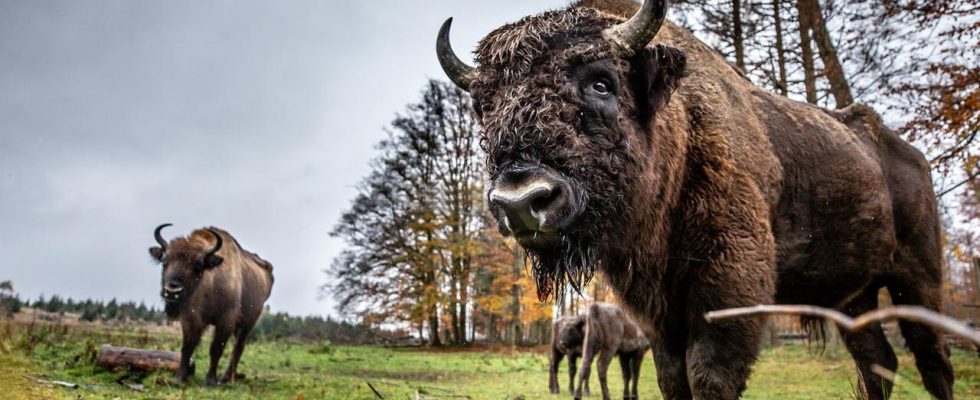Bison were already extinct in the wild. But exactly 100 years ago, two zoos decided to save Europe’s large wild cattle – with success. Today, the animals are an example of how species protection can succeed.
A weekend at the end of August 1923. A close-knit community meets in Berlin. Their goal: to prevent the final eradication of the bison. Because Europe’s big wild cattle had come through the First World War and the post-war years extremely badly.
“The last bison was poached after the First World War,” says Günter Trapp from the Alte Fasanerie wildlife park in Hanau-Klein Auheim. “People didn’t have anything to eat, they got what they could find nearby, and that was the wisent’s undoing.”
Eradication “with announcement”
That was in 1919, in the area of today’s Polish-Belarusian National Park Białowieża. At that time, the wisent population had been declining for a long time: around 6,000 years ago, the Europeans who were becoming sedentary began to clear the forests where the wild cattle were grazing. Later bisons were also hunted or killed for fun – beginning with animal hunts in ancient Rome and ending with court hunts of the Russian tsar, for example.
Fortunately, a few dozen bison survived in the care of European zoos. Among them were the Zoological Gardens of Berlin and Frankfurt am Main. They took the initiative in August 1923.
Some bison were also released into the wild in Germany, and many animals live in game enclosures.
The “mother” of all Species Conservation Projects in zoos
“The director of the Frankfurt Zoo at the time, Dr. Kurt Priemel, wrote down how the remaining bison were related to each other,” reports Marko Dinter, who now works for the Frankfurt Zoo as a nature conservation officer. Priemel’s list included only 56 animals when he invited to the founding meeting of the International Society for the Rescue of the Bison on August 25th and 26th in Berlin in 1923.
By this time, other wildlife species had already been successfully saved – such as the Alpine ibex by the House of Savoy and committed citizens in the Italian Alps, or the Chinese David’s deer by the Duke of Bedford in England. Nevertheless, the wisent initiative was something special: For the first time in the history of the zoos, several of them began to work together to save an endangered species together with other supporters.
Avoid inbreeding thanks to the stud book
Conservation breeding was the focus of the efforts. But only twelve bison were suitable for them. The remaining 44 were too closely related or no longer capable of breeding. After Priemel was elected the first chairman of the society, a stud book for bison was initiated.
To this day, it ensures that inbreeding is kept as low as possible when breeding the impressive cattle. “So bison breeding practically gave the starting signal for the preservation of completely different animal species that could only be saved through such breeding programs,” Dinter emphasizes the importance of the idea.
Back to nature after 33 years
Today there are over 8,000 bison again. And not just in zoos. Because bred specimens were resettled in various places in Europe. The first action of this kind took place in 1952 in Białowieża, where the last specimen died 33 years earlier. The bison returned to Germany in 2013, to the area around Bad Berleburg.
Although the coexistence of humans and bison is not always free of conflict – for example because the animals eat shoots and bark from trees in forests and thus antagonize forest owners – their resettlement is progressing. The search for suitable locations continues across Europe, and the Alte Fasanerie wildlife park in Hanau-Klein Auheim is also participating in the measures with offspring. “In the near future there will be releases again,” says Sabine Scholl, a zoo employee, “next in Azerbaijan”.
There, in the Caucasus, by 2028 a total of 100 zoo bisons should ensure the establishment of a stable population. In cooperation with the environmental organization WWF, Zoo Berlin also sends animals there. After 100 years, Europe’s largest wild cattle has become a flagship and beacon of hope for nature and species conservation in Europe.

